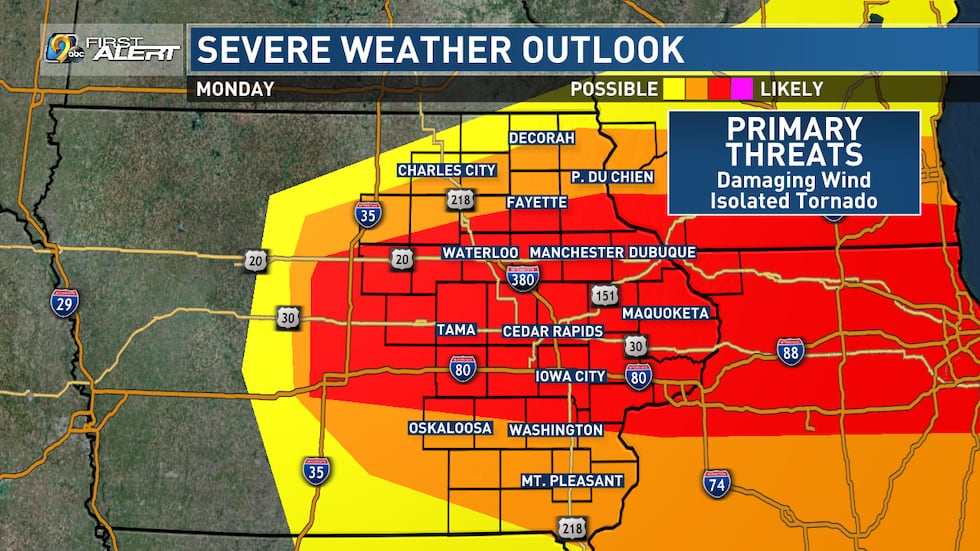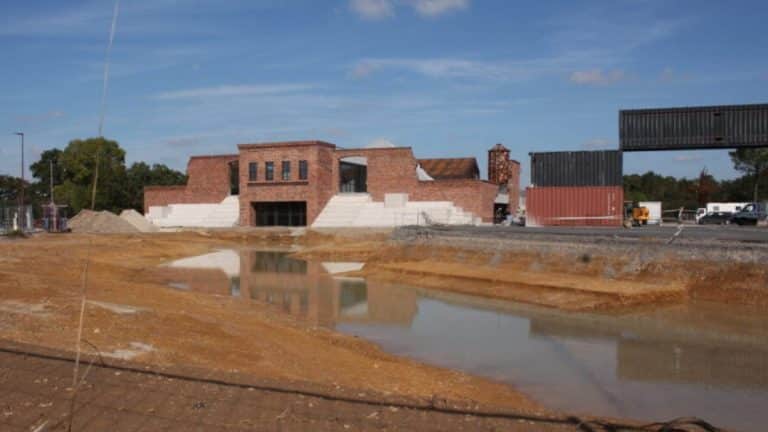Watch Out For Damaging Winds: Fast-Moving Storms Explained

Table of Contents
Identifying Fast-Moving Storms and Their Precursors
Identifying an approaching fast-moving storm requires vigilance and an understanding of several key indicators. Regularly checking weather reports from reputable sources, such as your national meteorological service, is paramount. Radar imagery provides valuable insights into storm movement and intensity. Visually, look for telltale signs like dark, ominous clouds that rapidly build, sudden and significant shifts in wind direction, and an unnerving stillness before the storm hits.
Several types of fast-moving storms can produce damaging winds:
Derechos: A Widespread Threat
Derechos are widespread, fast-moving windstorms associated with a band of rapidly moving thunderstorms. Their formation involves a process called convective instability, where warm, moist air rises rapidly, leading to the development of powerful downdrafts. These downdrafts generate damaging straight-line winds that can extend for hundreds of miles, causing significant damage across a broad area. The key characteristic of a derecho is the widespread nature of the damaging winds, distinguishing it from other, more localized, severe weather phenomena.
Downbursts and Microbursts: Concentrated Wind Damage
Downbursts are strong downdrafts that violently hit the ground, spreading out in a radial pattern. A microburst is a smaller, more intense version of a downburst, characterized by extremely powerful winds concentrated in a relatively small area (typically less than 2.5 miles in diameter). Both downbursts and microbursts can produce incredibly destructive winds capable of causing significant damage to buildings and infrastructure in a very short amount of time. The difference lies primarily in the scale of the event; microbursts are much more localized and intense.
Tornadoes: A Brief Mention
While tornadoes are undeniably fast-moving storms capable of inflicting catastrophic damage via extreme damaging winds, their specific characteristics and prediction methods differ significantly from those of derechos and downbursts. For more information on tornadoes, we recommend consulting your local National Weather Service or other reputable meteorological resources.
- Key Indicators of Approaching Fast-Moving Storms:
- Rapid pressure drops
- Sudden shifts in wind speed and direction
- Dark, ominous clouds
- Hail
- Heavy rain
Understanding the Mechanisms of Damaging Winds
The ferocious winds characteristic of fast-moving storms are generated by several atmospheric processes. Downdrafts, created by the cooling and sinking of air within a thunderstorm, are a primary driver. These downdrafts can create significant pressure gradients, resulting in strong, accelerating winds. Wind shear, or the change in wind speed or direction with height, can further amplify the wind speeds within these storms.
Several factors influence the ultimate wind speed and resulting damage:
-
Storm size and intensity: Larger, more intense storms naturally generate stronger winds.
-
Terrain: Hills and mountains can channel and accelerate winds, leading to intensified damage in certain areas.
-
Examples of Destructive Power of Damaging Winds:
- Uprooted trees and widespread deforestation
- Structural damage to buildings, including roof damage and wall collapses
- Power outages affecting large areas
- Damage to infrastructure, such as roads and bridges
Safety Precautions During Fast-Moving Storms
Preparedness is key to surviving a fast-moving storm. Early warning systems, such as weather alerts on your phone and radio, are crucial. A well-defined family emergency plan is essential.
Before the Storm: Preparation is Key
- Assemble an emergency kit including water, non-perishable food, first-aid supplies, flashlights, batteries, and a portable radio.
- Secure loose objects outside that could become airborne projectiles.
- Trim trees and shrubs near your house to minimize the risk of damage.
During the Storm: Seeking Shelter
- Move to the interior of your home, away from windows and exterior walls.
- Stay informed about the storm's progress through weather reports.
- Avoid contact with water and downed power lines.
After the Storm: Assessing the Damage
-
Check for structural damage to your home.
-
Be cautious of downed power lines – assume all lines are live.
-
Report injuries or significant damage to the appropriate authorities.
-
Essential Emergency Kit Items:
- Water (at least one gallon per person per day)
- Non-perishable food
- First-aid kit
- Flashlight and extra batteries
- Portable radio
- Whistle
- Dust mask
- Moist towelettes, garbage bags, and plastic ties (for personal sanitation)
- Wrench or pliers (to turn off utilities)
Protecting Your Property from Damaging Winds
Protecting your property from damaging winds involves a multi-pronged approach. Strengthening structures, such as reinforcing roofs and windows, is crucial. Planting windbreaks, using strategically placed trees and shrubs, can help deflect wind and reduce its impact on buildings.
- Practical Tips for Homeowners and Businesses:
- Regularly inspect your property for potential weaknesses.
- Maintain trees and shrubs to prevent damage.
- Consider installing hurricane shutters or impact-resistant windows.
- Secure loose objects on your property.
- Understand your local building codes related to wind resistance.
- Invest in adequate homeowner's or business insurance.
Stay Safe from Damaging Winds
Fast-moving storms pose a significant threat, but understanding their characteristics and taking proactive steps can dramatically reduce the risk to life and property. Remembering the importance of early warning systems, creating a family emergency plan, and implementing preventive measures against damaging winds are crucial for protecting yourself and your loved ones. Learn more about your local weather alerts, strengthen your emergency plan, and take proactive steps to mitigate the damage from damaging winds. Check your local National Weather Service website for further information and safety guidelines. Your safety and preparedness are paramount.

Featured Posts
-
 Clisson Hell City La Brasserie Ideale Avant Apres Le Hellfest
May 21, 2025
Clisson Hell City La Brasserie Ideale Avant Apres Le Hellfest
May 21, 2025 -
 Revealing Photos Of Paulina Gretzky Including A Topless Selfie
May 21, 2025
Revealing Photos Of Paulina Gretzky Including A Topless Selfie
May 21, 2025 -
 New Texas House Bill Targets Social Media Use Among Minors
May 21, 2025
New Texas House Bill Targets Social Media Use Among Minors
May 21, 2025 -
 Femicide A Critical Examination Of The Problem And Potential Solutions
May 21, 2025
Femicide A Critical Examination Of The Problem And Potential Solutions
May 21, 2025 -
 Megali Tessarakosti Ekdilosi Stin Patriarxiki Ekklisiastiki Akadimia Kritis
May 21, 2025
Megali Tessarakosti Ekdilosi Stin Patriarxiki Ekklisiastiki Akadimia Kritis
May 21, 2025
